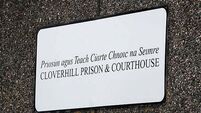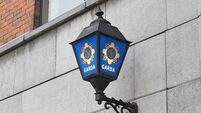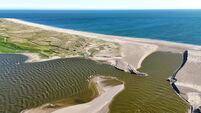Unknown monuments identified close to Newgrange in 'exceptionally successful' survey

Around 40 previously unknown monuments have been identified in the Brú na Bóinne area close to Newgrange as a result of what a leading archaeologist says was an “exceptionally successful” survey.
Dr Steve Davis of the UCD School of Archaeology, who has worked for over a decade on the Brú na Bóinne landscape, said the monuments appear to range from what are most likely early Neolithic houses to Neolithic timber enclosures as well as Bronze Age burial monuments and some early medieval farmsteads.
The area surveyed included locations both sides of the Boyne, within the bend of the Boyne and across from the megalithic tombs at Newgrange, Knowth and Dowth.
Dr Davis said the surveys that revealed these new monuments were carried out as part of collaborative research between UCD School of Archaeology and the Romano-Germanic Commission, Frankfurt.
The research is for the ‘Boyne to Brodgar’ project examining connections between Neolithic sites between the Boyne Valley and the Orkney Islands. The surveys to date have been funded by the German government.
Dr Davis also confirmed that an earlier survey in 2017 revealed what he described as a “spectacular” monument that is aligned with the Winter Solstice sunrise.
It is in a field just metres from the Newgrange passage tomb and he said it is a key monument that is the largest and most complicated of its type in the world.
He believes that it probably developed over several phases and comprised a large, rectangular arrangement of wooden posts, which enclosed a timber or stone ‘passage’ and were themselves enclosed by several rings of smaller timber posts.
He believes while unlikely to be a tomb, it has significant tomb-like features and is 200-300 years younger than Newgrange.
Newgrange is synonymous with the Winter Solstice where the dawn light illuminates the burial chamber and it is arguably the best known of the passage tombs in Brú na Boinne.

Professor Eszter Bánffy, director of the Romano-Germanic Commission and her colleague Dr Knut Rassmann have provided the infrastructure to survey hundreds of hectares of land in the core and buffer areas of the World Heritage site Brú na Boinne, for the project.
Their team has been using a large-scale geophysical imaging machine - originally designed to locate unexploded ordnance in the ground - to look for buried remains; it can survey up to 25 hectares a day.
Prof Bánffy said they want to find out if the southern side of the Boyne is as interesting as the northern side: “The first very, very preliminary results are exciting and there are features that need further investigation.”
Dr Davis said: “There are still significant gaps, most notably in our understanding of settlement, but we are continuing to work to understand these.”
By the time the Boyne to Brodgar project, which began five years ago is complete, more than five square kilometres will have been surveyed.













